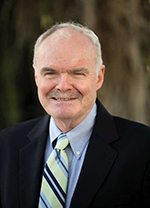Making Developers Foam
The recent announcement of the cooperation between the Florida East Coast Railway, Tri-Rail and CSX to maximize efficiency for both freight and passenger trains on South Florida’s two railroads invariably leads to speculation about who is going to make money on this unusual, and very welcome, deal. We don’t speak of passenger service. Usually nobody makes money transporting people on trains. Indeed, it seems extraordinary that the FEC is willing to fund its All Aboard Florida train from Miami to Orlando. For decades railroads with passenger service have been shifting the costs to government in the form of authorities.
FEC obviously sees something most transportation observers (also known as foamers) don’t, and it probably has to do with real estate. A company that got out of passenger service in the 1960s – just when the need was developing – is now under a different ownership and has done a 180 on passenger service. It not only is sponsoring its own fast train between prime Florida markets, but it is now willing to let Tri-Rail shift some trains to its rails, a move that will at last make that service truly useful. Amtrak is also considering bringing its long distance trains down the same tracks. This could become one very busy railroad. With that in mind, part of the cooperative concept is to switch the FEC’s slow-moving freights to the western CSX tracks, where they won’t stop traffic at so many grade crossings.
The FEC has large property holdings along its tracks, all the way from Jacksonville to Miami. It has already announced a major development on its extensive yards in downtown Miami. The return of passengers will undoubtedly enhance values elsewhere on its route.
Which brings up the question of real estate around its proposed stations in Fort Lauderdale and West Palm Beach. There is no question that development will be stimulated. Madison Square Garden is built above the underground Penn Station in Manhattan. Philadelphia’s Penn Center has 11 office towers in a four-square block area above an underground station. Fort Lauderdale already has seen a barrage of new residential construction south of Federal Highway, but not quite close enough to be an easy walk to the new station. But there is considerable empty or low-use land that will be near the station. Somebody is going to make make serious money.
There was a recent study released in Pennsylvania showing that suburban home values along the numerous commuter lines of the Southeastern Pennsylvania Transportation Authority (SEPTA), are considerably higher in neighborhoods close to stations, especially those stations with large parking lots. A home convenient to that excellent commuter system is more than $30,000 higher than a comparable home farther away. Caveat: The study was in SEPTA’s self interest. It is trying to get more state support for a system that is basically serving Philadelphia and its suburbs.
This is not quite comparable to what South Florida can expect in the foreseeable future. Philadelphia’s system is remarkable, with commuters going both ways. City dwellers now commute to suburban corporate parks near outlying stations. However, it could be a similar situation when Tri-Rail builds new commuter stations along the FEC, especially when the service is extended north to Jupiter, and perhaps even into Martin County where there is open land along the tracks. A visionary could even predict a statewide system of pretty fast trains linking all the towns that were born more than a century ago when Henry Flagler brought the iron horse to Florida.
It’s enough to make foamers out of developers.
Add new comment

